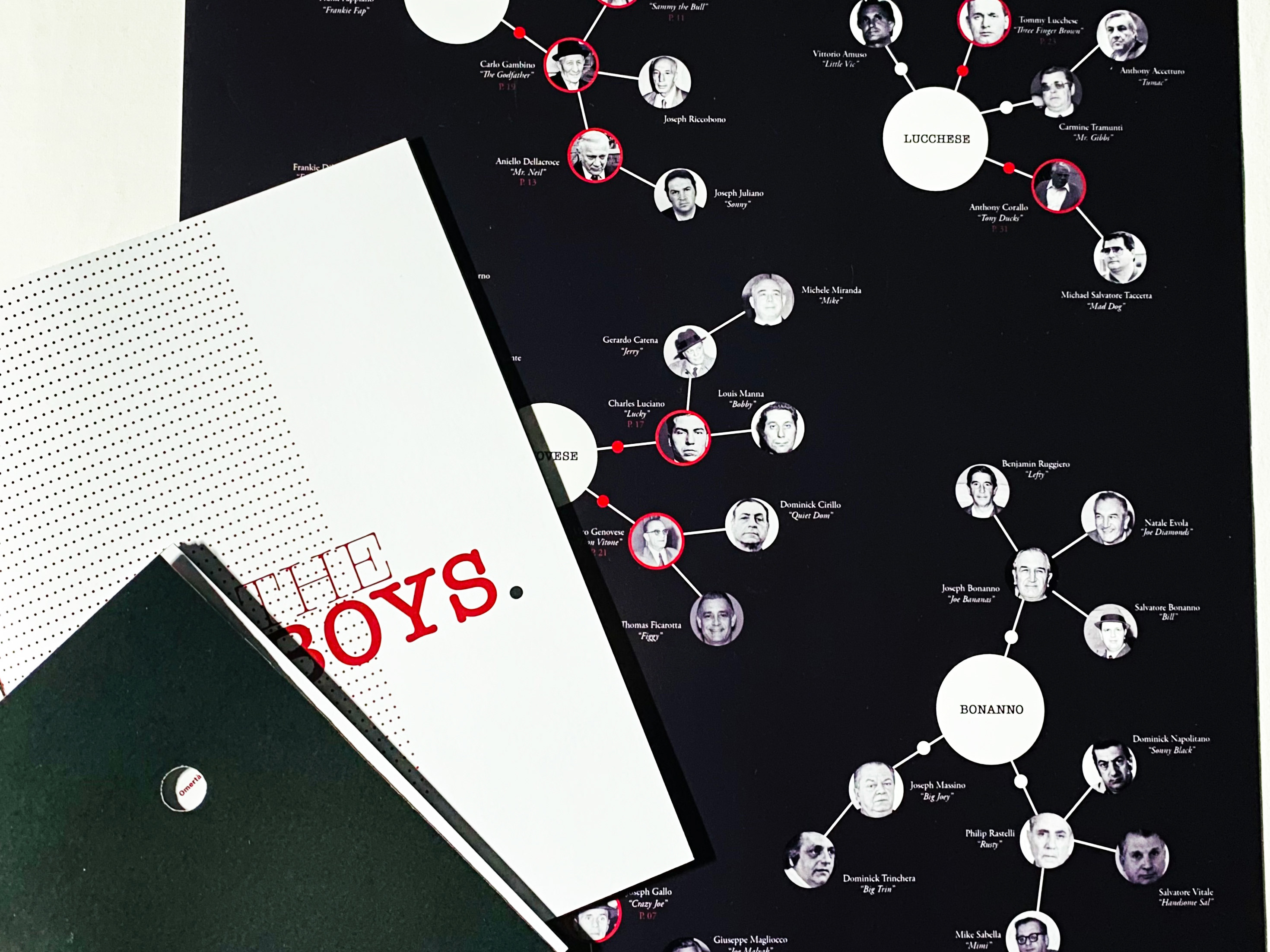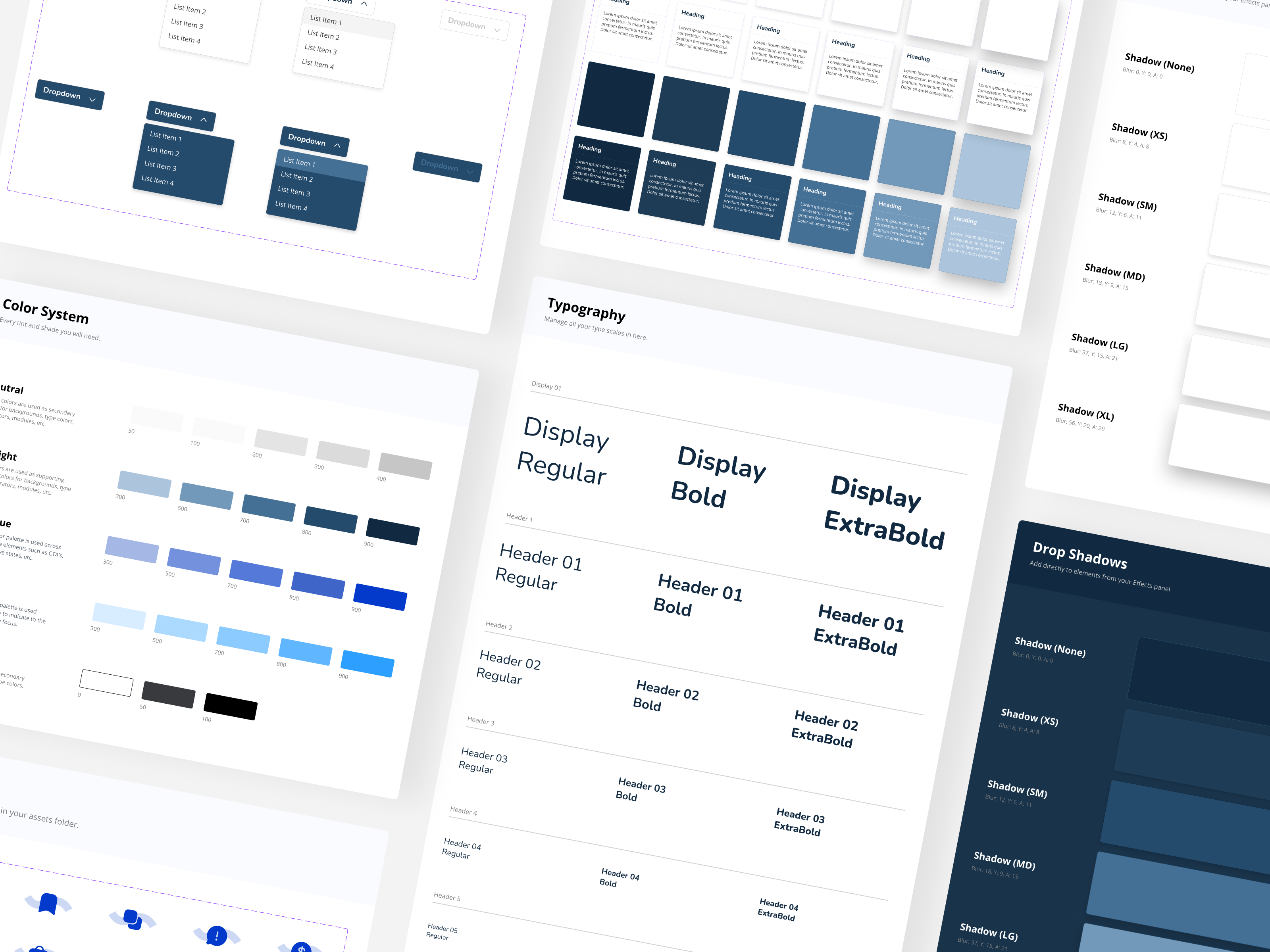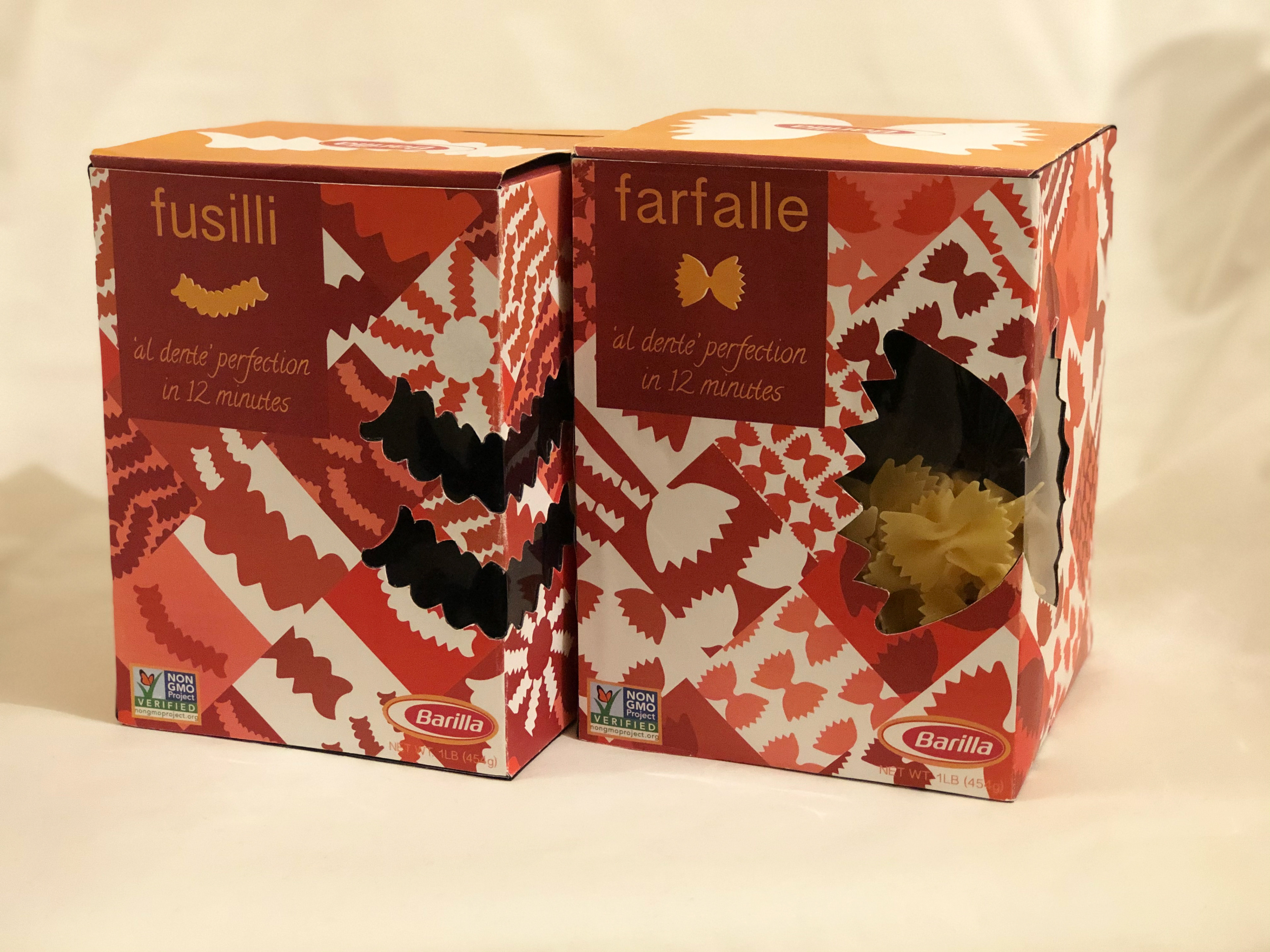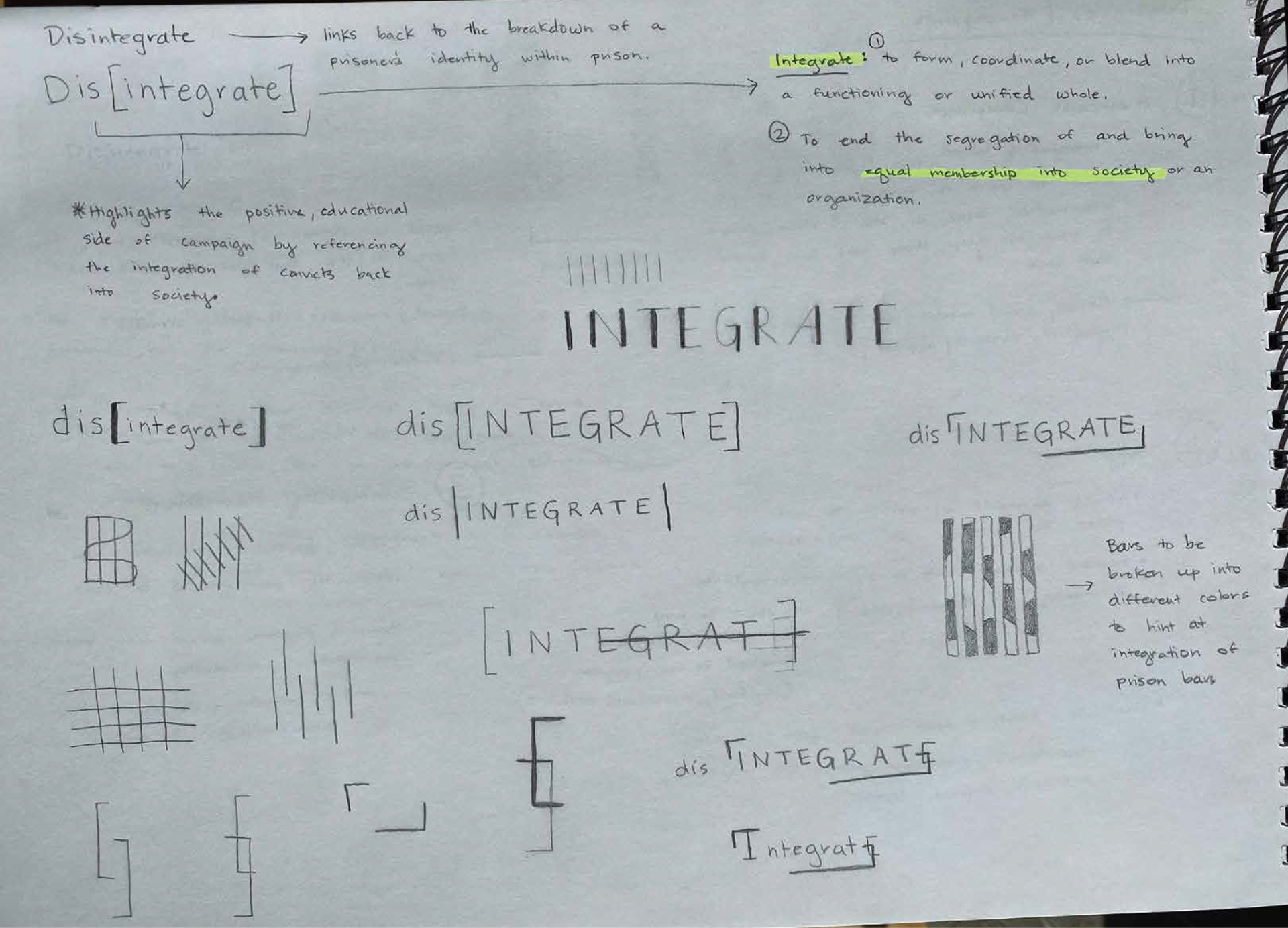

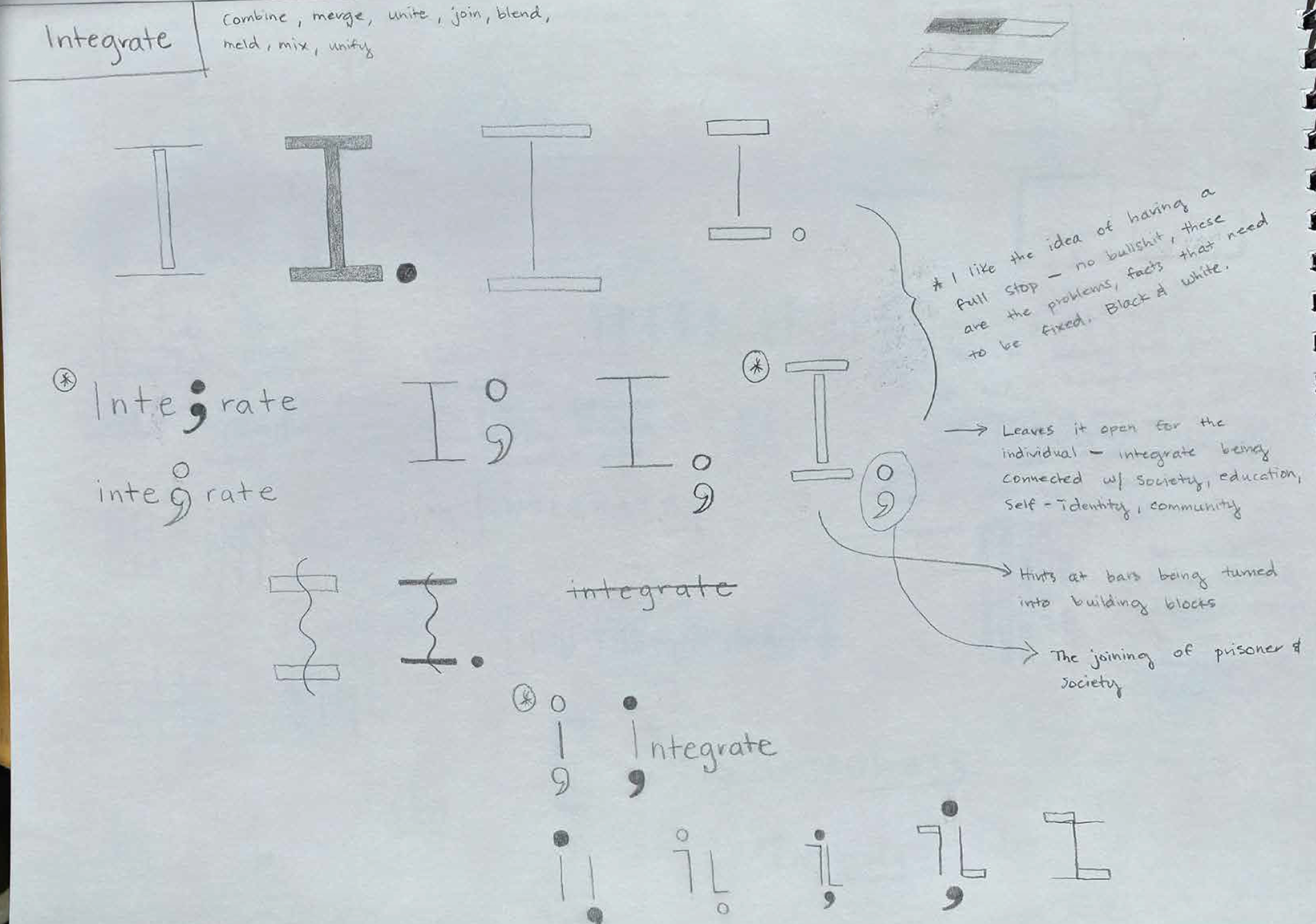
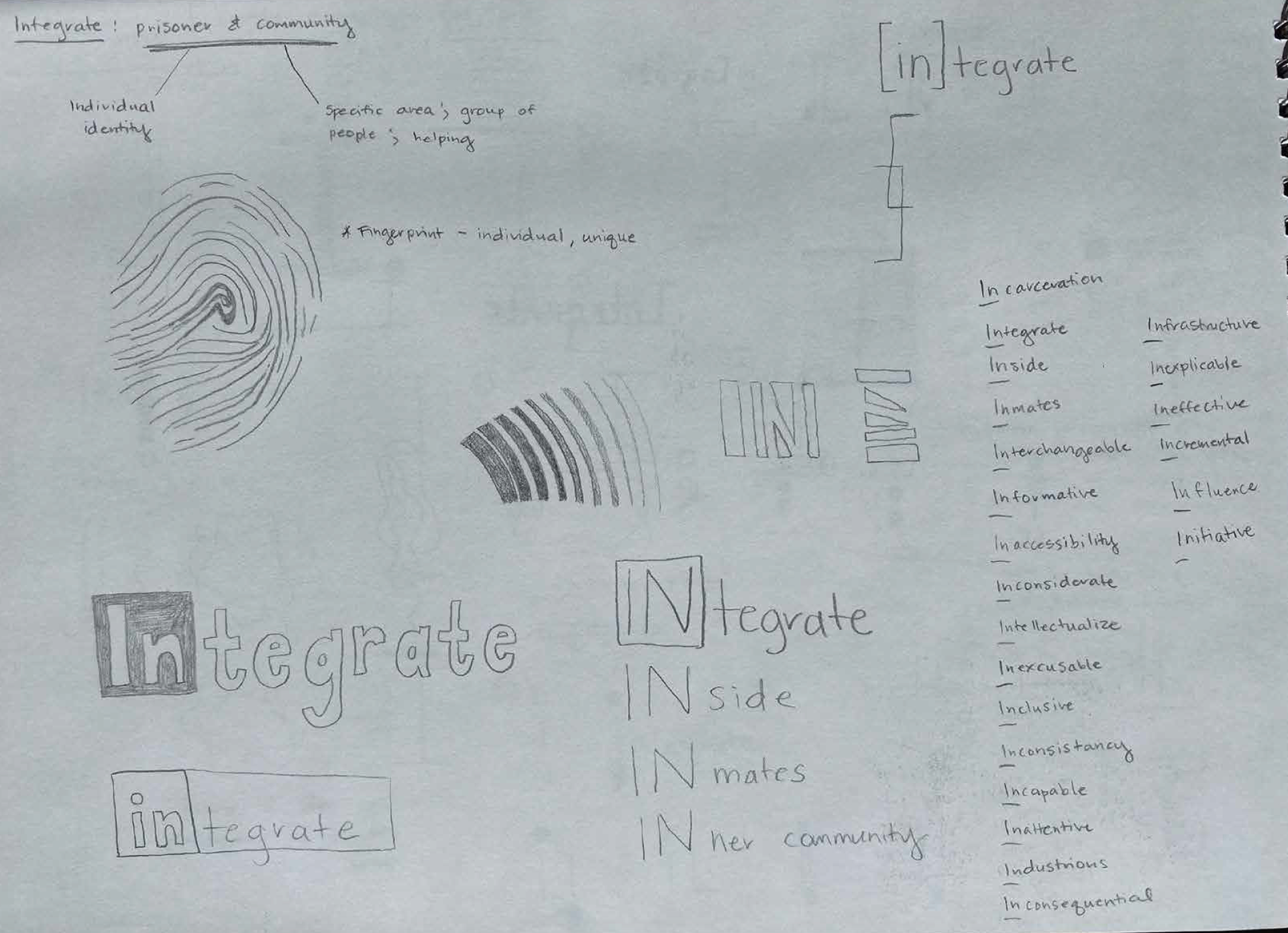
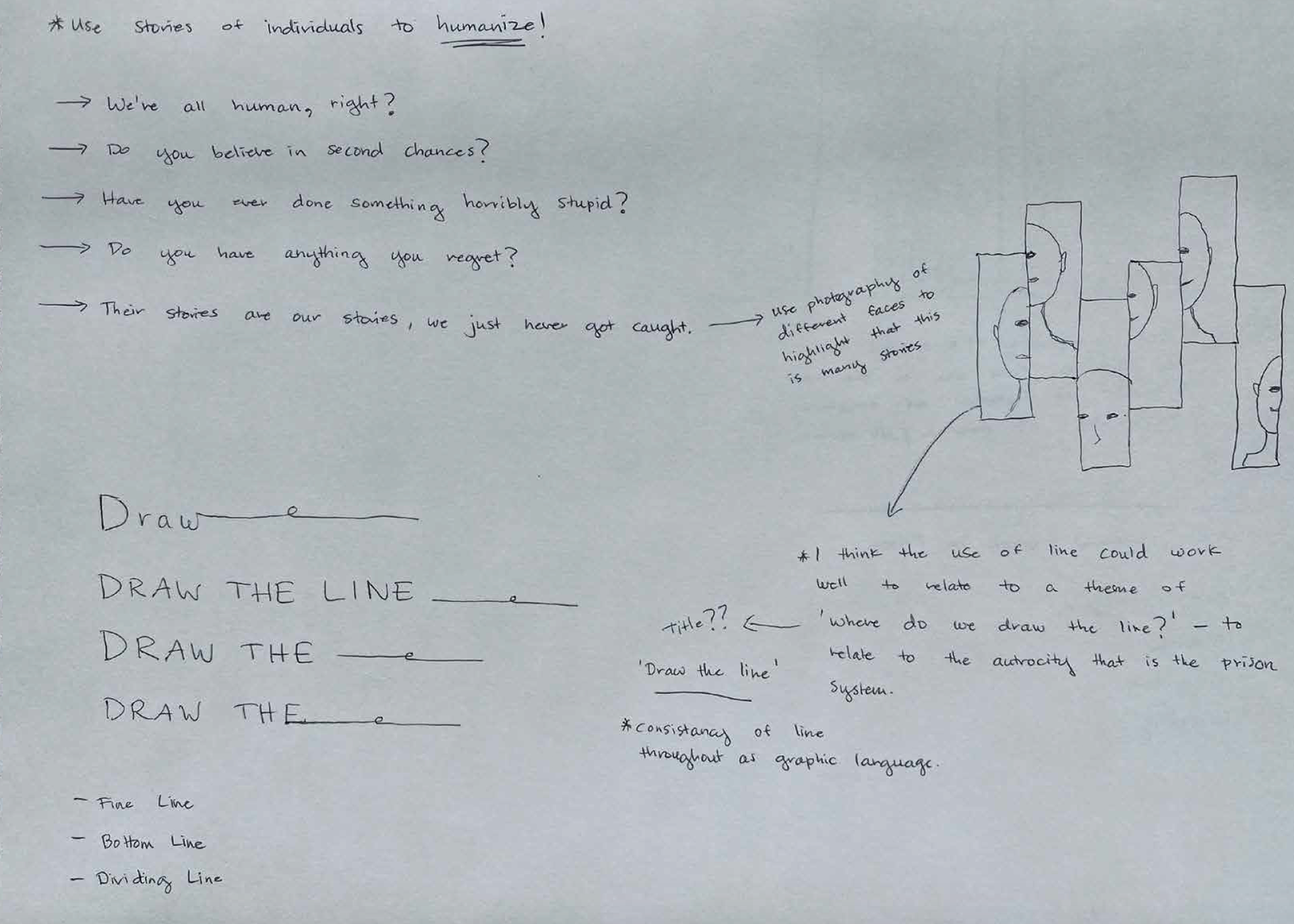

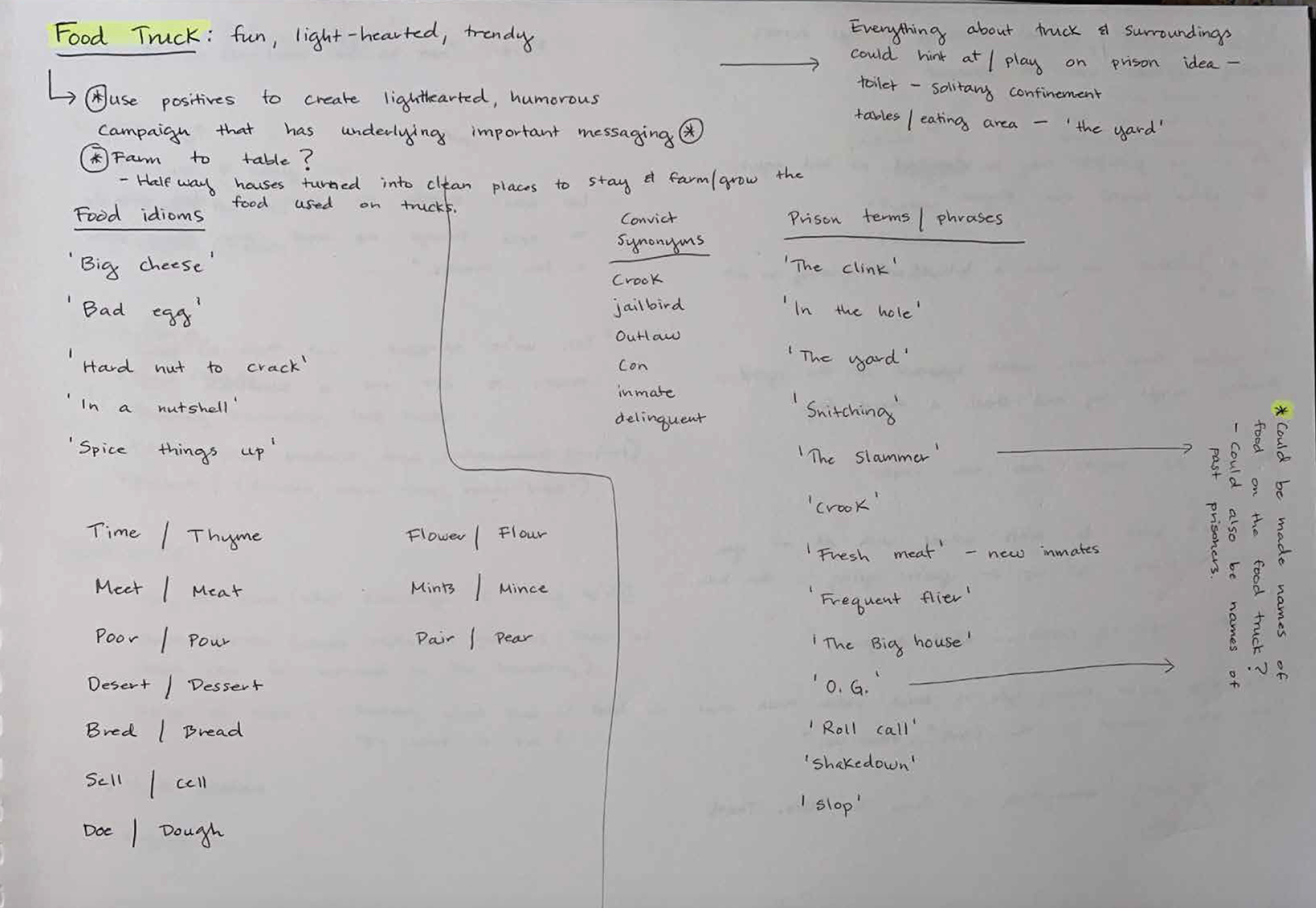
The Project
After tons of research into multiple different angles on the word "identity" to co-inside with the project brief, I settled on how prison can alter ones identity. Through a ton of iterations and a complete overturn of original concepts, Draw the Line was created.
Draw the Line aims to give those who have paid their debt to society a way to re-integrate more easily back into their communities through the human and cultural connection of food. It’s an initiative to give ex-convicts a habitable living space post-release, whilst allowing them to farm all the fresh food used on the food trucks. These trucks would give ex-cons a livable wage and a connection back to society.
The campaign and branding plays on food idioms and prison terminology to give the project a touch of humor, while still delivering important messaging. The use of free-drawn line throughout creates a sense of continuity and relates back to the overall theme of where do we ‘draw the line’ at a broken system?
Documentary style photography was used to humanize individuals and take the fear and taboo away from ex-convicts.
All the branding surrounding the trucks would be based around communicating the true stories of prisoners and ex-convicts to further humanize these individuals to the public.



